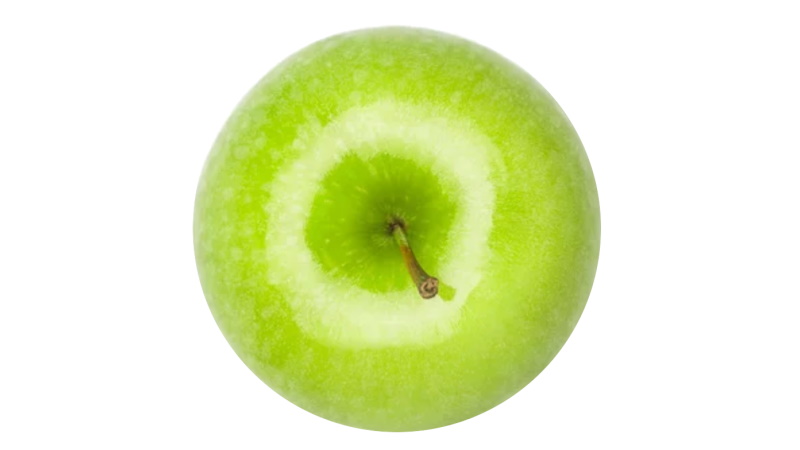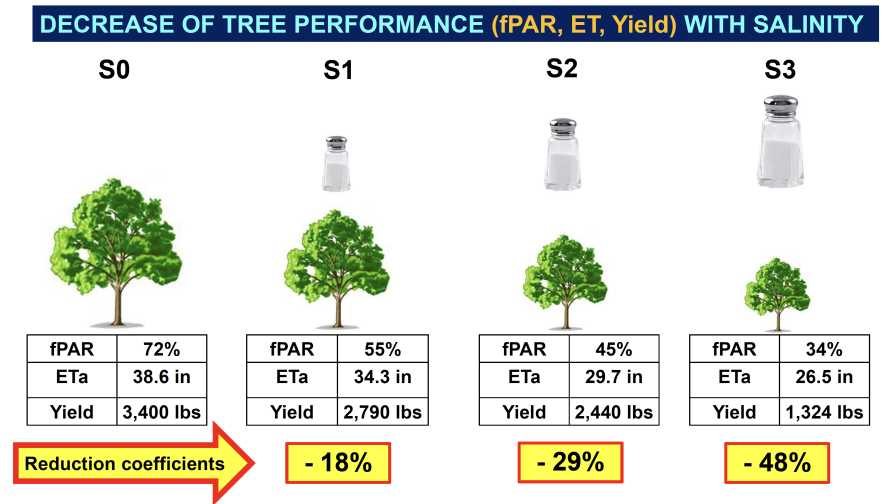Why You Should Test Peak Salinity in Pistachio Orchards
In terms of land usage, the pistachio industry frequently takes what other growers have forsaken. Approximately a quarter of the industry’s annual U.S. acreage is grown on “marginal soils” — saline and saline-sodic grounds that curb the water infiltration in the soil profile and the ability of a plant’s roots to absorb water.
But pistachio growers are limited in their opportunism.
Addressing and defining those limits is the goal of an ongoing University of California, Davis study on actual water consumption and improved irrigation management of pistachio orchards grown with micro-irrigation on non-saline and increasingly saline soils.
“This info on actual pistachio water consumption is needed to understand how much expansion into salt-affected areas that the pistachio industry can afford,” Daniele Zaccaria, Head of the Agricultural Water Management Lab at UC Davis, says. “There is not sufficient information available to growers on actual evapotranspiration (ET) and crop coefficients (Kc) of pistachio grown with micro-irrigation systems.”
A UC Davis study conducted in the early ‘90s largely focused on non-saline pistachio orchards that were sprinkler-irrigated with good-quality water. But considering the industry trend of expansion into marginal soils and toward micro-irrigation, there is a need for updated information on actual water use of micro-irrigated pistachio.
Zaccaria’s study, which began in 2016 and now includes two bi-annual cycles of the alternate-bearing nut, involves commercial pistachio orchards in Tulare, Kings, and Fresno counties in California. The state accounts for 98% of the U.S. crop and in 2018 boasted 265,000 to 275,00 bearing acres and 100,000 to 150,000 non-bearing acres. The estimated value of the resulting 987 million pounds of pistachio was $2.6 billion. This year’s crop is expected to be the first to exceed 1 billion pounds.
“The pistachio acreage is expanding mainly on the western side of the San Joaquin River,” Zaccaria says. “There is large room for further expansion on those marginal soils.”
STUDY PARAMETERS
Soil salinity is measured as the salt concentration in terms of electric conductivity (EC) in decisiemens per meter (dS/m). The canopy cover is measured by the fraction of photosynthetically active radiation absorbed by the trees vegetation (fPAR).
The UC Davis trial — comprised entirely of mature ‘Kerman’ trees on Pioneer Gold 1 (PG1) rootstock — distinguishes four study groups of orchards, ranging from non-saline “S0” (EC = ~2 dS/m, fPAR = 72%) to high-saline “S3” (EC = 8-11 dS/m, fPAR = 34%).
“We aimed to characterize the relationships between the soil-water salinity, the light interception by the tree canopy (fractional canopy cover), and the actual evapotranspiration (ETa),” Zaccaria says.
STUDY RESULTS
Analysis of UC’s field data shows that ETa, light interception by tree canopy, and nut yield are highly and linearly related.
“It’s clear that the water-use efficiency (WUE), expressed in terms of inches of water per percentage of canopy cover, increases with salinity,” Zaccaria says. “The yield decreases progressively with increasing salinity. And the water productivity (WP), expressed as pounds of dry in-shell nuts per inches of water consumed, also, in general, decreases with the level of salinity.”
Zaccaria bases tree performance on three parameters: canopy size (light interception), amount of water consumed, and yield generated. As such, the reduction in performance from S0 to S1, S2, and S3, respectively, was 18%, 29%, and 48%.
Hence, growers should realize, Zaccaria says, that micro-irrigated pistachio is still a very suitable crop for the water-limited context and increasing inter-annual weather variability of the Central Valley and San Joaquin Valley of California.
“In fact,” he adds, “pistachio has the ability to withstand water deficit that may result from periodic droughts and from regulatory water limitations, and the adaptability to grow and produce on salt-affected conditions, and the resilience that enables trees to evapotranspire large amounts of water and produce very profitably during normal and wet years.”












